Flower Garden Fertilizer Tips for Vibrant Blooms
Creating a flourishing flower garden often requires more than just sunlight and water. Fertilizers play a crucial role in providing the essential nutrients your plants need to grow healthy and strong. By understanding the right types of fertilizers and how to use them properly, you can ensure that your garden blooms beautifully throughout the season.
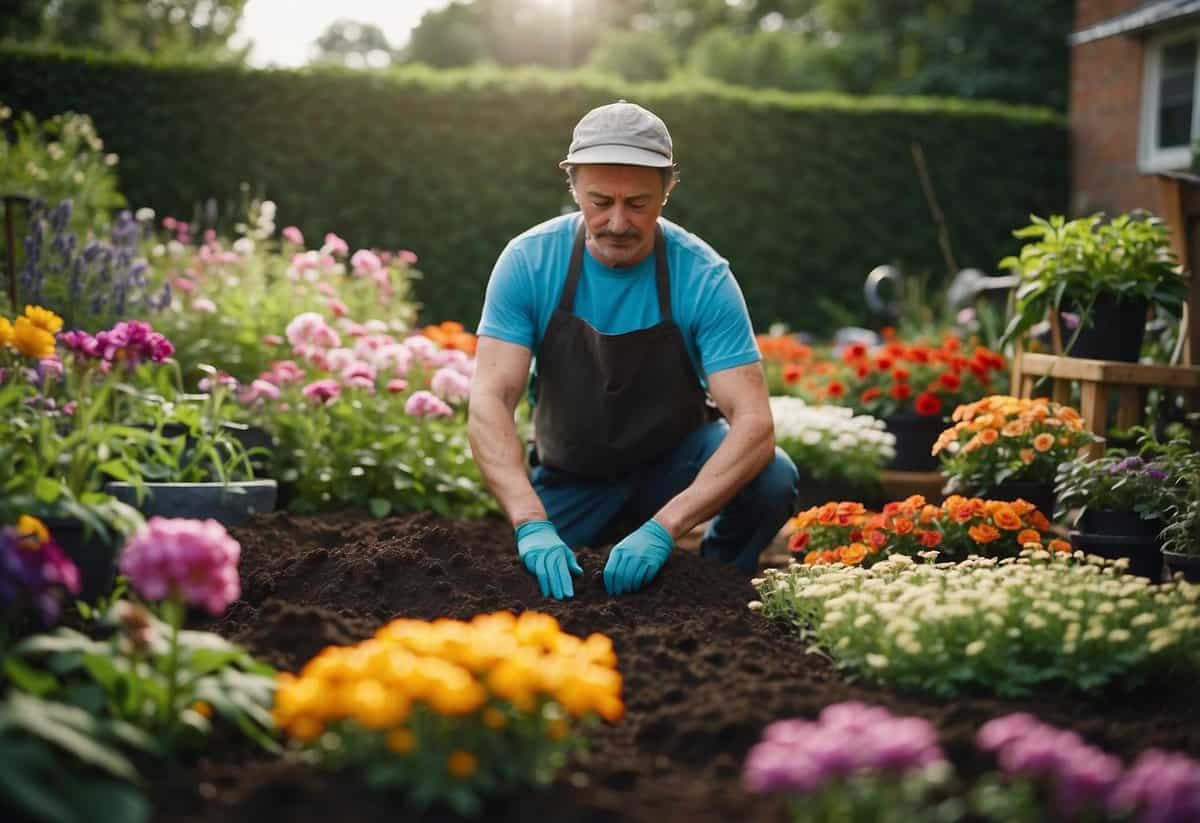
How can you choose the best fertilizer and apply it correctly to support vibrant and healthy flowers? Whether you’re a seasoned gardener or just starting out, knowing these tips will help you avoid common mistakes and achieve the best results. Let’s explore some practical advice to keep your flower garden thriving.
1) Organic Bone Meal

Organic bone meal is a natural fertilizer made from steamed animal bones. It is ground into a fine powder or granules. This fertilizer is rich in phosphorus, which is essential for plant growth. Phosphorus helps plants make flowers and fruit.
The NPK rating of bone meal is usually around 3-15-0. It’s also high in calcium. You can use it in your flower garden by applying 5 to 10 pounds per 100 square feet. For bulbs and transplants, use 1 to 2 tablespoons per planting hole. This will help your plants stay healthy and strong.
2) Miracle-Gro Water Soluble

Miracle-Gro Water Soluble is a great choice for feeding your flower garden. It gives your plants instant nutrients, helping them grow bigger and healthier.
You need to mix 1 tablespoon of Miracle-Gro into one gallon of water. Apply this mixture every 7 to 14 days for best results.
You can use a watering can or the Miracle-Gro Garden Feeder to apply the solution. The feeder can cover 500 square feet in about 12 minutes.
Miracle-Gro works well for all flowers and vegetables, making it a versatile option for your garden.
3) Jobe’s Organics Granular

Jobe’s Organics Granular is a great choice for your flower garden. It’s 100% organic and helps your plants grow strong and healthy.
This fertilizer is designed to boost root mass and support healthy foliage. It’s fast-acting, so you’ll see results quickly.
For more details, check out this Jobe’s Organics Rose & Flower Granular.
4) Wiggle Worm Soil Builder

Wiggle Worm Soil Builder is an excellent choice for improving your flower garden. These pure worm castings provide natural nutrients to your plants. They are organic and safe to use.
You can mix a small amount into the soil around your houseplants, vegetables, or flowers. The castings help build the soil, making it healthier over time.
Worm castings are pH neutral, so they won’t burn your plants. This makes them a worry-free option for any garden enthusiast.
5) Espoma Organic Holly Tone

Espoma Organic Holly Tone is a great choice for acid-loving plants. It contains a balanced N-P-K ratio of 4-3-4, alongside essential nutrients like calcium, magnesium, and sulfur.
For new potted plants, mix 2 cups of Holly Tone per cubic foot of soil. For established plants, sprinkle 1 tsp for each 3 inches of pot diameter around the edge.
Preparing a new garden bed? Use 10 lbs. per 100 square feet and mix it into the top 4-5 inches of soil. This will help your plants thrive. For more details, you can visit the complete guide.
6) Dr. Earth Organic 5
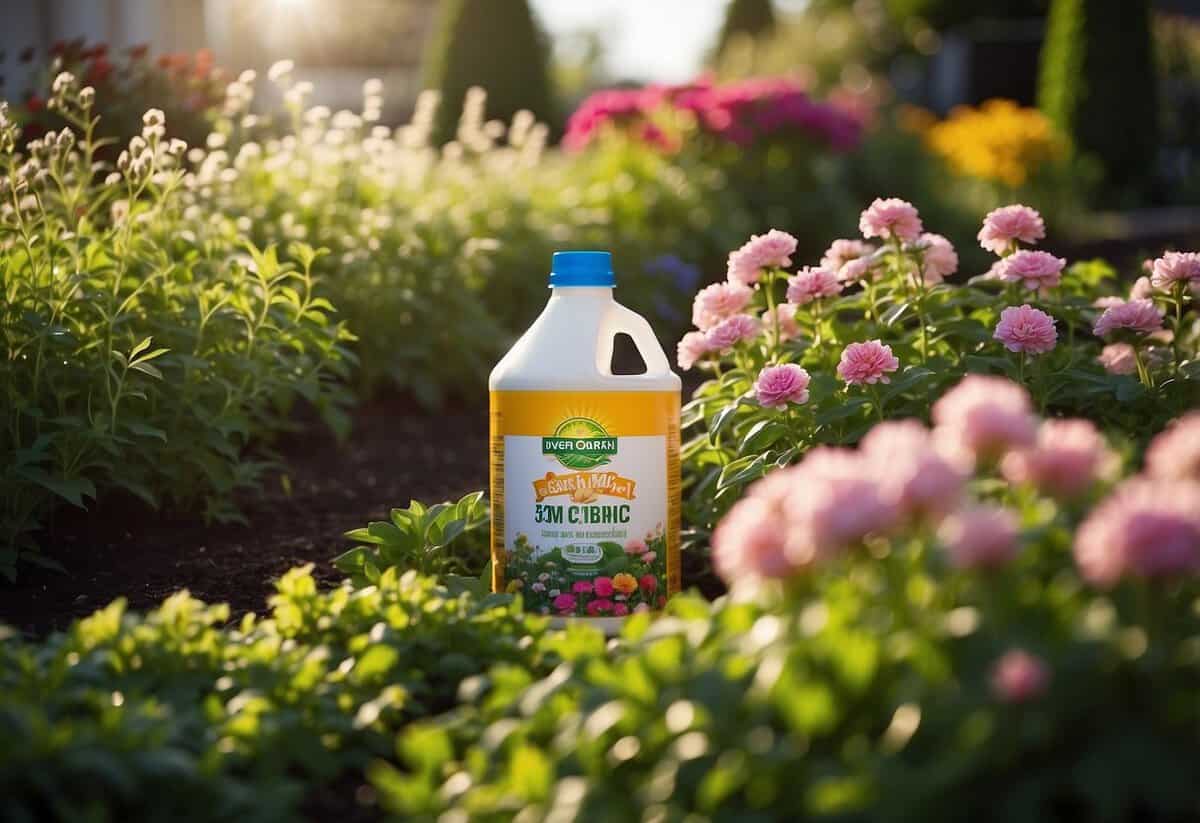
Dr. Earth Organic 5 is a great choice for your flower garden. It provides balanced nutrients that help your plants grow strong and healthy. This fertilizer includes beneficial soil microbes that improve nutrient absorption.
You can use Dr. Earth Organic 5 for both potted and in-ground flowers. Simply follow the instructions on the package for the best results. Regular use promises vibrant blooms. Learn more about it here.
7) Alaska Fish Emulsion

Alaska Fish Emulsion is a great choice for your flower garden. This fertilizer comes from fish parts that are not used for anything else. It’s organic and good for the environment.
You can find Alaska Fish Emulsion in both liquid and granular forms. For liquid fertilizer, mix it with water following package instructions. For indoor plants, use 1-2 teaspoons per quart of water.
Remember to spread it evenly over the soil to make sure all your plants get the nutrients they need. This makes your flowers grow healthier and more vibrant.
8) Osmocote Smart-Release

Osmocote Smart-Release is an excellent choice for your flower garden. It’s a slow-release fertilizer that provides nutrients to your plants over several months. This means you don’t have to worry about frequent applications.
You can sprinkle the granules on the soil’s surface or mix them into the potting soil. For indoor plants, applying it when repotting works best. Osmocote’s balanced formula ensures your flowers get the right nutrients for healthy growth.
If you’re interested in learning more about using Osmocote in your garden, check out this complete guide.
9) Neptune’s Harvest Hydrolyzed
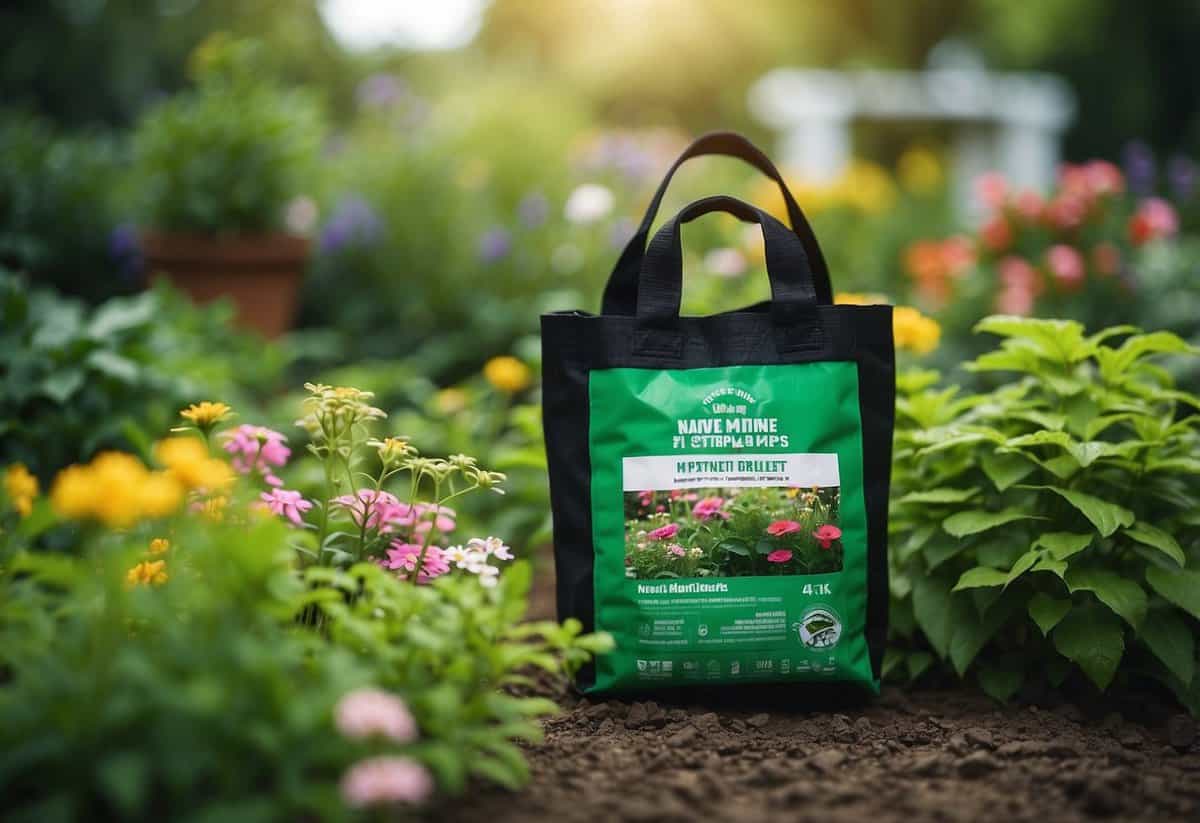
Neptune’s Harvest Hydrolyzed Fish Fertilizer is a great choice for organic gardening. It uses a cold process to maintain heat-sensitive nutrients naturally found in fish.
For houseplants, mix 1 tablespoon per gallon of water. Feed them every 1-2 weeks.
For outdoor plants, use 1/8 cup per gallon of water. This can be used on vegetables, flowers, trees, and shrubs. Feed every 1-2 weeks.
For more details, visit Neptune’s Harvest official page.
10) Down To Earth All Natural
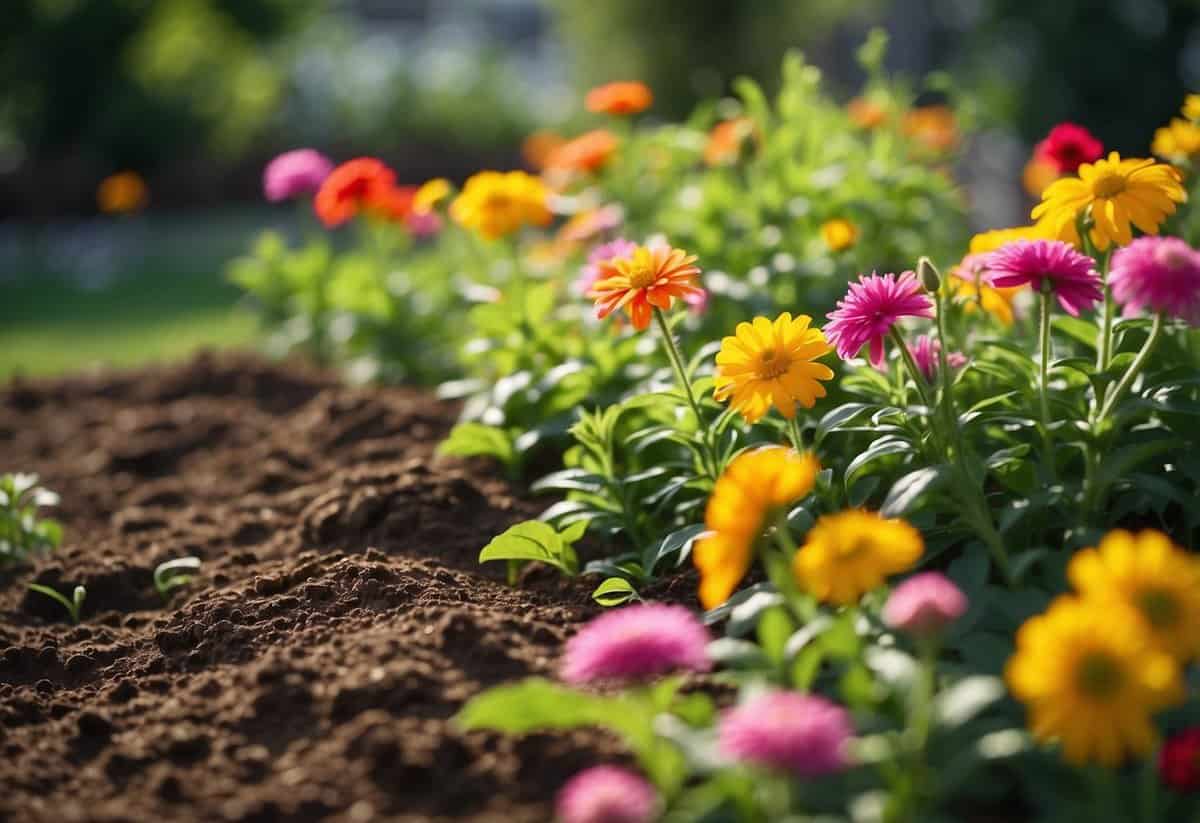
Down To Earth All Natural fertilizers are a great choice for your flower garden because they are organic and eco-friendly. These fertilizers work well with the natural organisms in your soil.
You can find a variety of Down To Earth products, each designed to meet different gardening needs. Make sure to prepare your soil properly by removing weeds and loosening it before application. For more information, check out their gardening guide.
Understanding Flower Garden Fertilizer

Using the right fertilizer in your flower garden can make a big difference in the health and appearance of your plants. This section will explain the different types of fertilizers and the nutrients they contain.
Types of Fertilizers
There are several types of fertilizers you can use in your flower garden. These include organic and synthetic fertilizers.
Organic fertilizers are made from natural materials like compost, manure, and bone meal. They release nutrients slowly and improve soil structure.
Synthetic fertilizers are made from chemical compounds. They provide nutrients quickly and are often labeled with a set of three numbers, like 10-10-10, indicating the percentage of nitrogen, phosphorus, and potassium.
Another type is slow-release fertilizers. These provide a steady supply of nutrients over time, which can be less labor-intensive as you don’t need to fertilize your garden as often.
Liquid fertilizers are also available. These are dissolved in water and applied to the soil or foliage. They can quickly provide nutrients to your plants.
Each type of fertilizer has its benefits, so choose one that matches your garden’s needs.
Nutrient Composition
Fertilizers contain three main nutrients: nitrogen (N), phosphorus (P), and potassium (K). These are often referred to as N-P-K.
Nitrogen helps with leaf and stem growth. If your plants have yellow leaves or slow growth, they might need more nitrogen.
Phosphorus is essential for root development and flower production. A lack of phosphorus can result in poor flowering and weak roots.
Potassium strengthens your plants, helping them resist disease and withstand drought. It also plays a role in overall plant health and growth.
Some fertilizers also include micronutrients like iron, manganese, and zinc. These are needed in smaller amounts but are still important for plant health.
When choosing a fertilizer, look for one that matches the specific needs of your flower garden, based on the plant types and soil conditions. For example, a high-phosphorus fertilizer can help improve bloom production.
How to Apply Fertilizer Properly
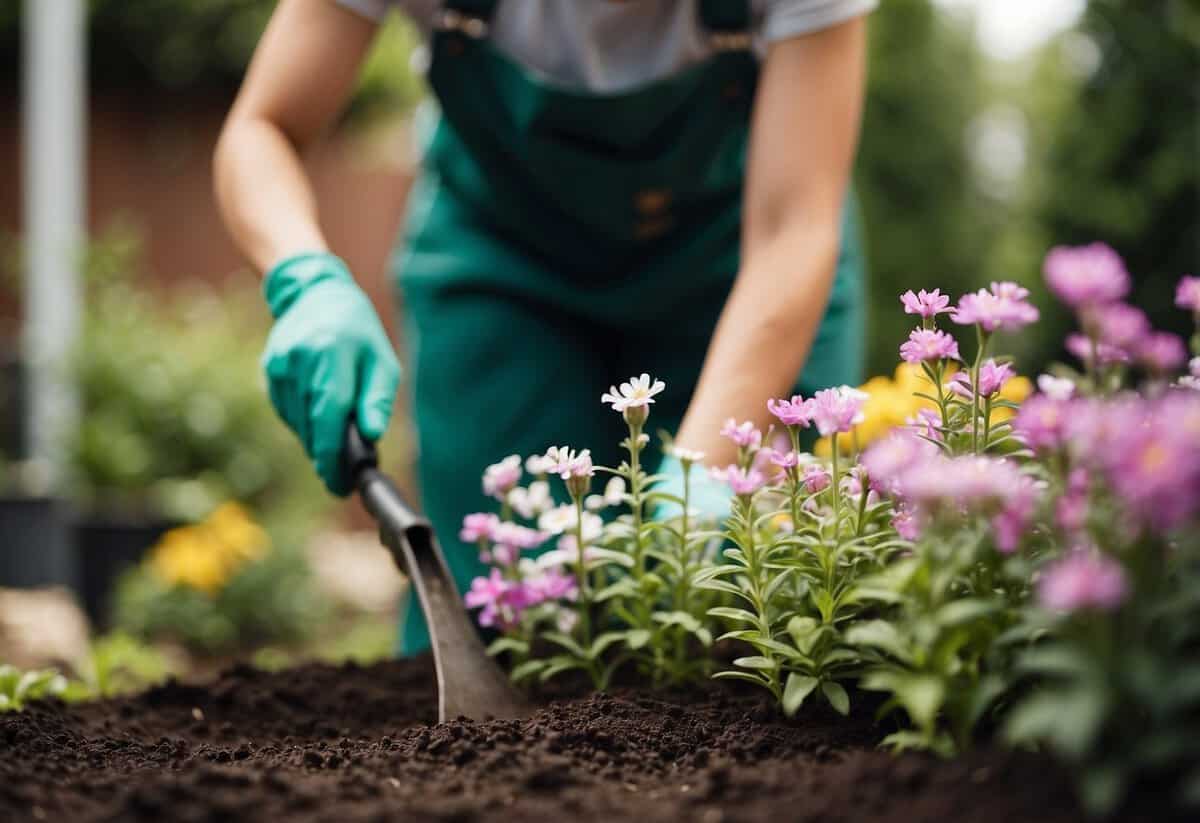
Knowing how to fertilize your flower garden can make a big difference in plant health and blooming. Key elements include understanding how often to apply the fertilizer and choosing the right methods.
Frequency and Timing
Use fertilizer at the right time for the best results. Most flowers benefit from an initial feeding in early spring as soon as new growth appears.
A second application in late spring or early summer helps support the plant through blooming season.
For flower gardens, it’s generally best to apply fertilizer every 4-6 weeks during the growing season. Make sure to follow any specific instructions on the fertilizer packaging.
Watch your plants for signs they need more nutrients, like yellowing leaves or stunted growth. If you notice these symptoms, you may need to adjust your fertilizing schedule.
Try not to fertilize too late in the season, especially in areas with cold winters, as this can encourage new growth that might not survive the cold.
Application Methods
Choose the right method for your garden and the type of fertilizer you are using. Granular fertilizers can be broadcast by hand and then gently mixed into the soil. Using a garden rake for this step works well.
Water your garden immediately after applying granular fertilizer to help it break down and reach the roots.
Liquid fertilizers are quickly absorbed and can be applied with a watering can or a hose-end sprayer.
If using the sidedress method, place the fertilizer around the base of the plants but avoid letting it touch the stems or leaves to prevent burning.
Always read the instructions on the fertilizer package for specific guidelines. For detailed application tips, visit Epic Gardening or Dave’s Garden.







